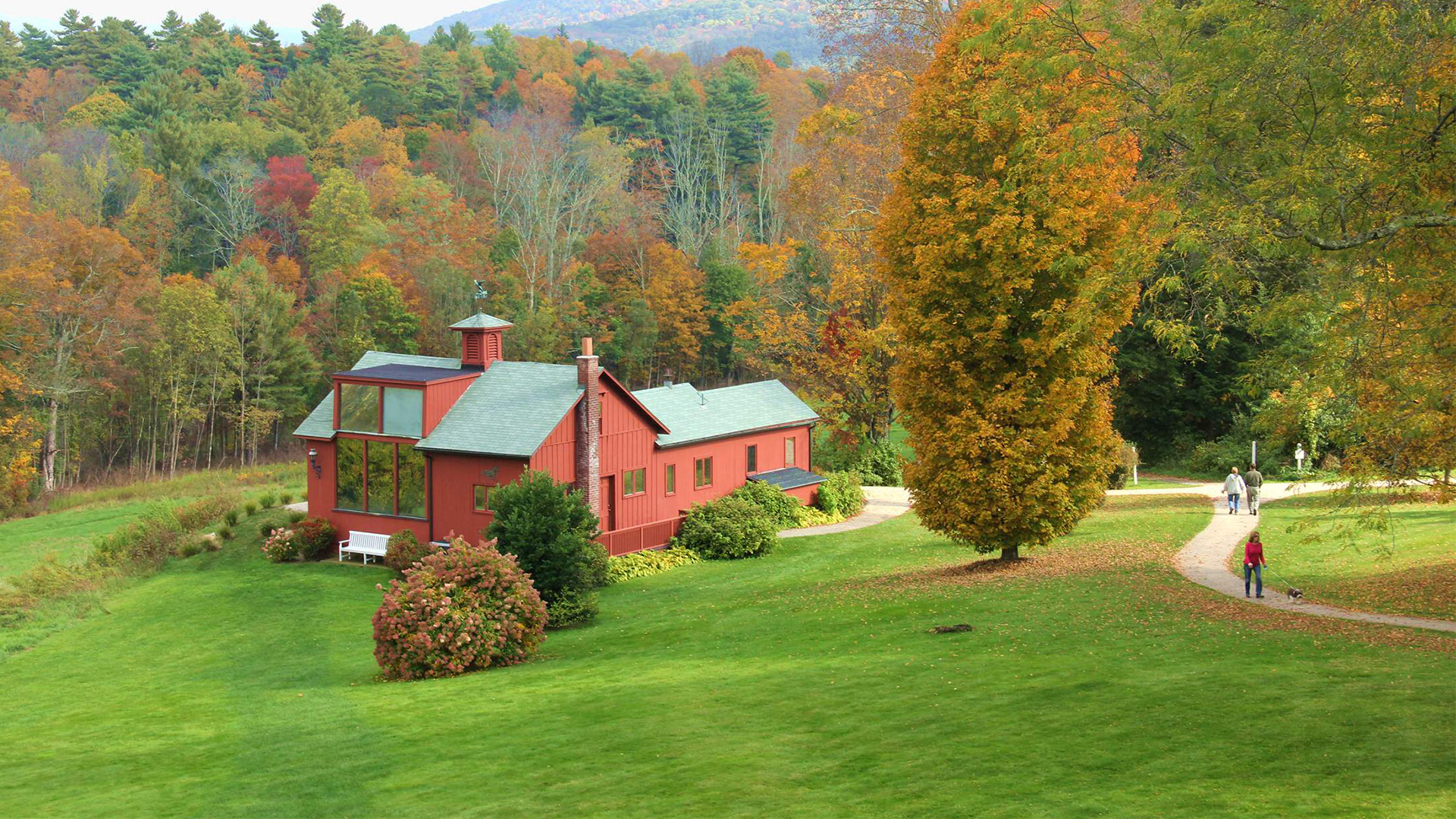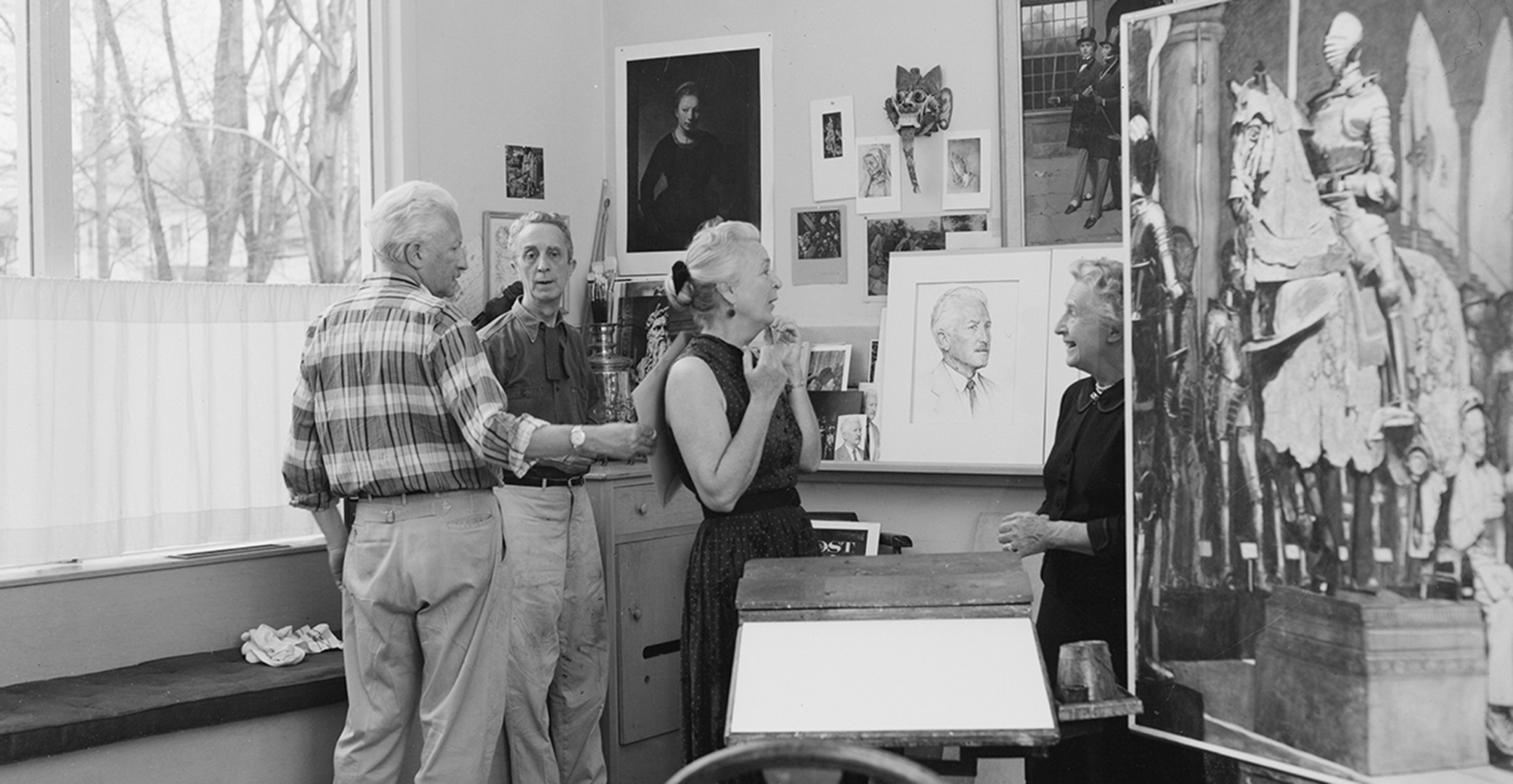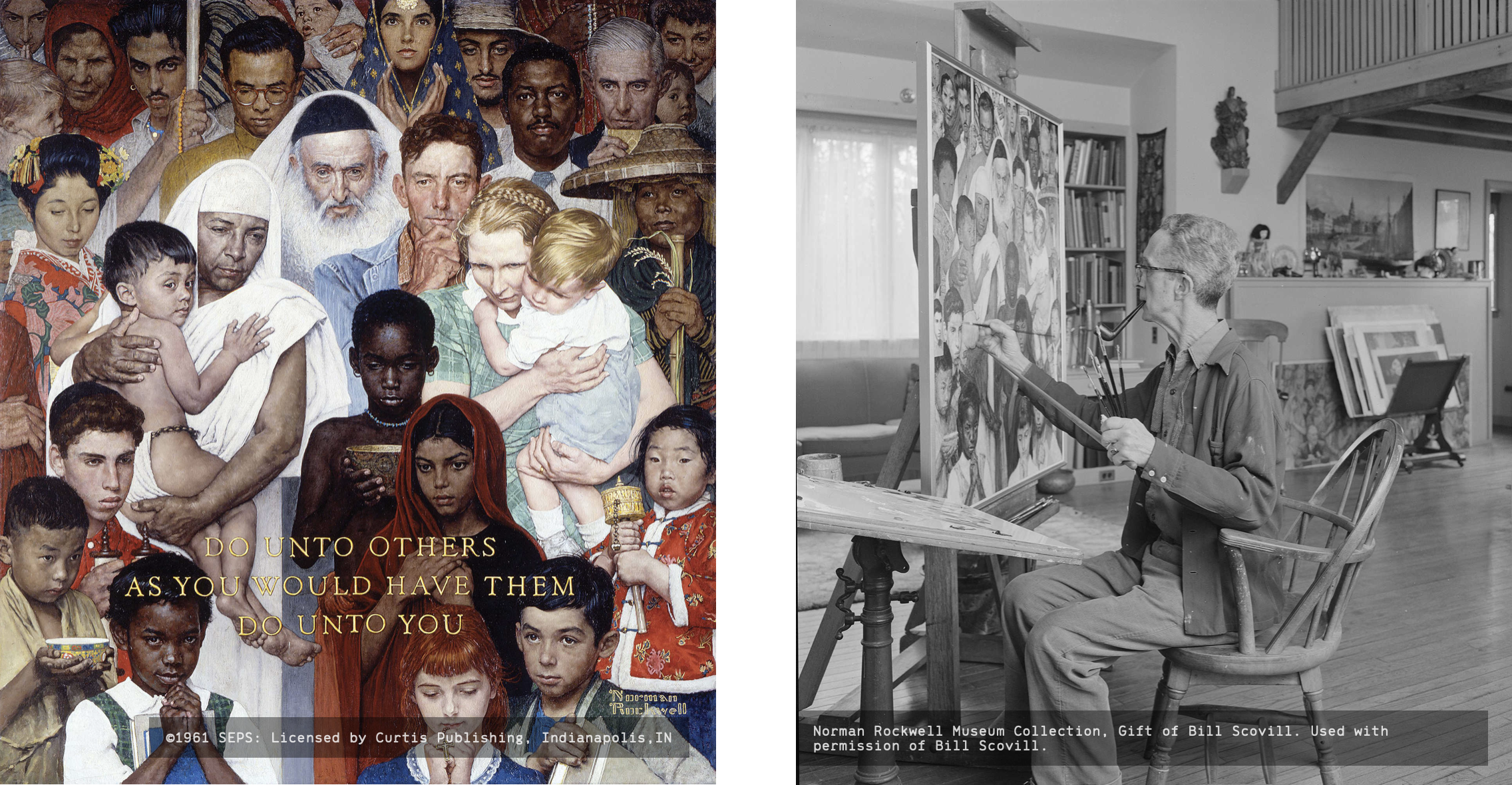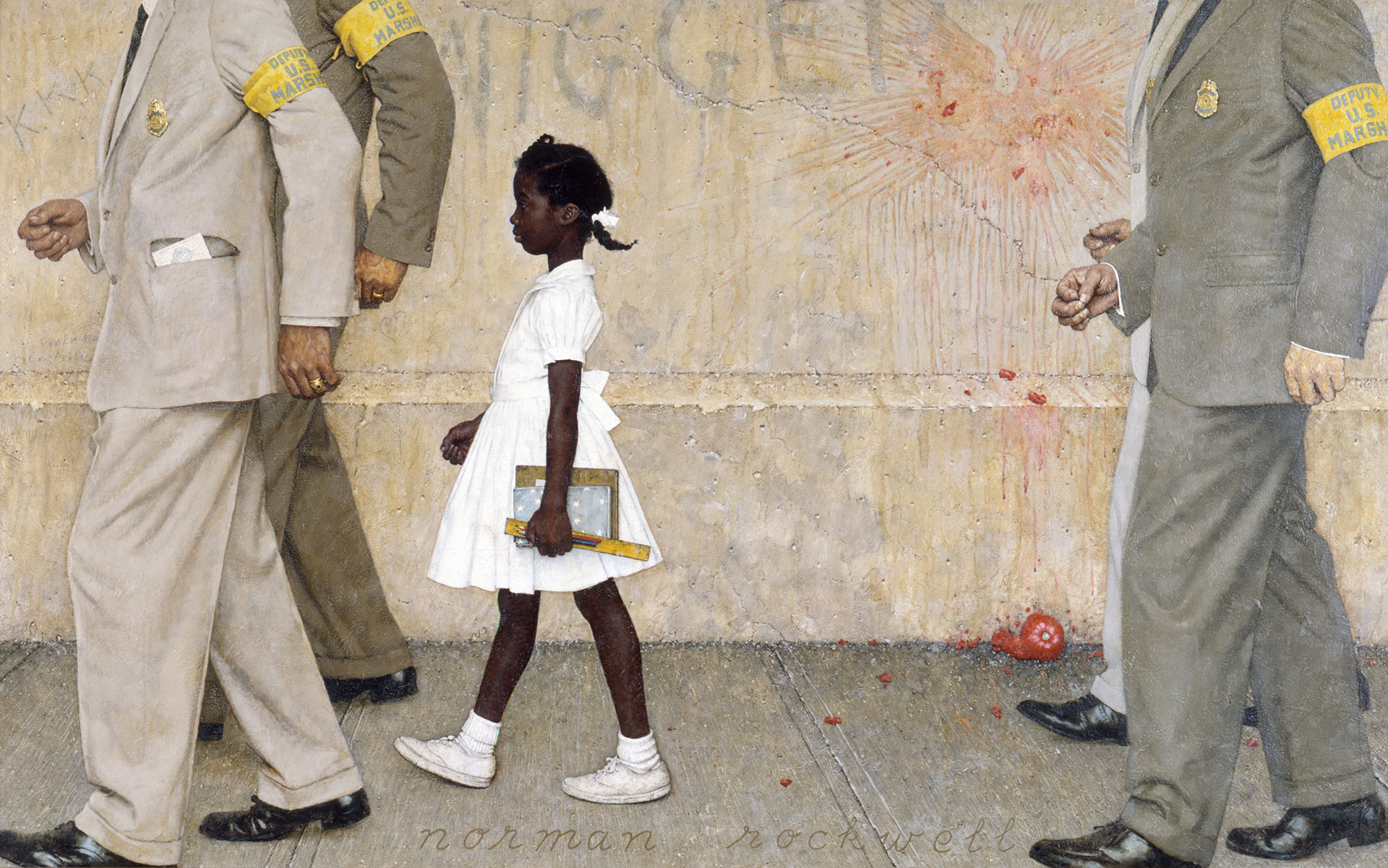An Artist in His Studio: The Enduring Vision of Norman Rockwell
By Ligaya Malones
December 19, 2022
Link to National Trust for Historic Preservation: SavingPlaces.org
During Norman Rockwell’s lifetime he moved hearts and minds through his widely disseminated published illustrations, offering everyday people an opportunity to participate in the national conversations in a way few artists of his time could. When Rockwell moved to Stockbridge, Massachusetts, in 1953, he was at the pinnacle of his career. It was here, in his meticulously renovated 1830s carriage barn studio, that he created some of his most enduring works—from neighborly gatherings of small-town America to vivid scenes of national social change.
In 2022 Rockwell’s Stockbridge studio was welcomed into the National Trust for Historic Preservation’s Historic Artists’ Homes and Studios (HAHS) program. Today, the studio is on the campus of the Norman Rockwell Museum in Stockbridge, where it is preserved as a distinct representation of the artist’s practice and his enduring memory in the country’s collective history.

Exterior of the Norman Rockwell Studio on the campus of the Norman Rockwell Museum.
“Of Rockwell’s 21 working studios he enjoyed during his prolific lifetime, his Stockbridge studio is the only that is still preserved as his treasured workspace,” said Laurie Norton Moffatt, director/CEO of Norman Rockwell Museum.
Norman Rockwell, A Life
Born in 1894 in New York City, Rockwell knew from an early age that he wanted to be an artist. He took art classes in high school and enrolled in art studies at The National Academy of Design and The Art Students League. By the age of 19, he worked as the art director for Boys’ Life, the official publication for the Boy Scouts of America.
Rockwell’s professional life was spent as an illustrator—for 47 years at The Saturday Evening Post, and later for Look magazine. In 1960 he published his autobiography, My Adventures as an Illustrator.

Thrice married, Rockwell had three sons with his second wife, Mary Barstow, a schoolteacher whom he met in California. His first studio in Vermont was destroyed by a devastating fire in 1943, just after he had produced his famous Four Freedoms paintings—which illustrate President Franklin Delano Roosevelt’s vision for postwar America.
In 1953, the family moved to Massachusetts where Mary could receive medical attention for depression and alcoholism at the Austen Riggs Center, and where Rockwell would also receive support for his own periods of depression. In an interview with National Public Radio about her biography American Mirror: The Life and Art of Norman Rockwell, author Deborah Solomon commented how conversations with psychoanalyst Erik Erikson connected Rockwell with the social politics of the age.
(Image Credit: Norman Rockwell in his studio Molly Rockwell, Erik Erikson, and Joan Erikson, with “Lunch Break for a Knight,” 1962.)
In 1973, Rockwell established an art trust, assigning what is now the Norman Rockwell Museum stewardship of his works. He added his Stockbridge studio to the art trust in 1976 for its perpetual preservation. Rockwell died just two years later in 1978.
From Freedom from Want to The Problem We All Live With
On the heels of World War II, art critics of that time were dismissive of Rockwell and the profession of illustration. Stephanie Plunkett, deputy director and chief curator of Norman Rockwell Museum, says, “Rockwell’s art was realistic and based upon a visual narrative with a story that was understandable, and that was antithetical to the ideals of abstract expressionism,” the popular art movement of that era.
Rockwell’s work “was a very public art,” Plunkett continued. “The paintings that he created were reproduced by the millions on the covers and pages of popular magazines that came into peoples’ homes, so readers had a very personal connection with him.” Among the thousands of original Rockwell artworks that were published over more than five decades, the Stockbridge studio is where some of his most influential work was created.

Left: Norman Rockwell’s “Golden Rule,” 1961. Oil on canvas. Cover illustration for “The Saturday Evening Post,” April 1, 1961.
Norman Rockwell Museum Collection.
Right: Norman Rockwell working on “Golden Rule” in his Stockbridge Studio, 1960.
Prior to moving to Stockbridge, Rockwell largely focused on idealistic, wholesome scenes of mostly white small-town America. In the 1960s and 1970s, Plunkett said, “he began to do more socially conscious work. His illustrations for Look, many focusing on civil rights, were done in the [Stockbridge] studio.” In 1961, Saturday Evening Post published Rockwell’s Golden Rule, featuring a collage of different individuals of varying ethnicities, genders, and religious affiliations with an inscription, “Do unto others as you would have them do unto you.”
“The thing is that all major religions have the Golden Rule in common… Not always the same words but the same meaning,” Rockwell is quoted as having said in The Norman Rockwell Album.

It is also at the Stockbridge Studio that Rockwell created for Look, in 1964, The Problem We All Live With, an illustration of a young Black school girl escorted to school by four U.S. Marshals. Look published the illustration to mark the 10th anniversary of the Supreme Court ruling Brown v. Board of Education, which states that it is unconstitutional to separate school children on the basis of race.
Life in Rockwell’s Stockbridge Studio
Before it became Rockwell’s art studio, the original structure was a 19th-century carriage barn that he had renovated and outfitted to his specifications. Its original location was steps away from his home on South Street, where it served as Rockwell’s creative home for 21 years.
(Image Credit: Norman Rockwell’s “The Problem We All Live With,” 1964. Oil on canvas. Illustration for Look, January 14, 1964. Norman Rockwell Museum Collection.)
Notable refurbishments included Shaker-style built-in cabinets. Here, Rockwell kept his paints, brushes, and other tools and supplies tucked away within its clean lines and minimalistic aesthetic.
The welcoming studio also features a front and back door which saw a multitude of visitors—who were often offered a Coca Cola—during Rockwell’s time. “Here he met and posed his models, from local community members to famous celebrities who were chronicled in his published artworks that were enjoyed by millions of viewers,” added Norton Moffatt.
Additional features of Rockwell’s modest, split-level studio include an extensive library, a wide open main-level with large, North-facing windows for natural illumination, which minimized undesirable shadows and changing light. It also had a loft space where Rockwell stored art supplies like canvases, models’ clothing, and props (such as an actual skull, which would have been used for anatomical drawings.) The loft also kept memorabilia from Rockwell’s travels and boxes of sketches filled with discarded ideas.

Norman Rockwell in his Stockbridge studio, c. 1960.
The studio had a dark room where the photographs that would inform his paintings were occasionally processed, plus a storage room located in its rear area.
In Rockwell’s later years, he was known to take regular naps on the couch in the studio. “He had an intensive, deadline-driven schedule,” said Plunkett.
Visiting the Studio Today
As a means to preserve the studio, Rockwell’s Stockbridge studio was relocated to its current location at the Museum’s address.
For Valerie Balint, director of the HAHS program, the studio’s current location in relationship to the larger museum provides unique connections to be made by visitors: “When visiting the Norman Rockwell Museum, you have the rare opportunity to view the masterworks and archival materials from the museum’s vast holdings, which inform these finished works and the life of Rockwell, as artist, member of local community, and family man.”

Norman Rockwell’s “Stockbridge Mainstreet at Christmas (Home for Christmas),” 1967. Oil on canvas.
Story illustration for McCalls, December 1967. Norman Rockwell Museum Collection.
She continued, “Then just a short walk away, you are able to immerse yourself in the space he required to create all these images that have transcended art to become part of the broader popular culture of the nation. It’s powerful. Especially since paintings like the Golden Rule were completed there. The studio and the museum campus are also just a short drive from downtown Stockbridge where you can also see the Main Street that inspired several of his artworks. All this makes the addition of the studio and incredible addition to the portfolio of HAHS sites.”
For Norton Moffatt, “Rockwell stands among the pantheon of American artists whose studios are treasured spaces where visitors can experience the daily life rhythms and working habits of an artist.”
Donate: Donate today to Help Save the Places Where Our History Happened.


